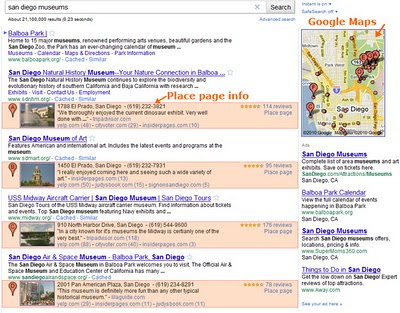Let’s start with algorithms…
Do you know what an algorithm is? According to Wikipedia: “In mathematics and computer science, an algorithm is an effective method expressed as a finite list of well-defined instructions for calculating a function. Algorithms are used for calculation, data processing, and automated reasoning.” All you really need to know for this conversation is that GOOGLE uses many algorithms to deliver SEARCH results to those that use the GOOGLE search engine. Oh, and one more thing: GOOGLE is constantly reviewing and tweaking their SEARCH algorithms.
Everyone dreams of being #1 out of 2 million+ results, or at least everyone dreams about being on page 1. Right? I am not talking about being #1 for your business name, most businesses can accomplish that feat with a little time, good content and responsible search engine optimization. No, what I am talking about is being #1 or on page 1 for a really competitive, albeit generic, keyword or keyword phrase. The fact is there is a lot of competition for most businesses’ wares and services, unless of course you have a very specific niche with no competition. I will not belabor this, but instead invite you to read GOOGLE’s entire announcement for their latest algorithm update, that really deals with what they call “content farms”. Here is an important highlight:
“Many of the changes we make are so subtle that very few people notice them. But in the last day or so we launched a pretty big algorithmic improvement to our ranking—a change that noticeably impacts 11.8% of our queries—and we wanted to let people know what’s going on. This update is designed to reduce rankings for low-quality sites—sites which are low-value add for users, copy content from other websites or sites that are just not very useful. At the same time, it will provide better rankings for high-quality sites—sites with original content and information such as research, in-depth reports, thoughtful analysis and so on.
We can’t make a major improvement without affecting rankings for many sites. It has to be that some sites will go up and some will go down. Google depends on the high-quality content created by wonderful websites around the world, and we do have a responsibility to encourage a healthy web ecosystem. Therefore, it is important for high-quality sites to be rewarded, and that’s exactly what this change does.”
What about GOOGLE and JCPenney?
We all know JCPenney, the store. Heck, I used to live in a town where the only “department store” was JCPenney. We didn’t have a Macy’s, SEARS, K-Mart, Walmart, Bloomingdales, Nordstroms…somehow we managed and what we couldn’t find in the store itself we purchased from the JCPenney catalog. Did you know it was founded in 1902? That is a lot of merchandising. But this month the New York Times reported to GOOGLE that JCPenney’s website was violating GOOGLE’s “link scheme” policy. GOOGLE investigated the claim and after finding the claim to be true, then took action against JCPenney.
“On Wednesday evening[in early February], Google began what it calls a “manual action” against Penney, essentially demotions specifically aimed at the company.
At 7 p.m. Eastern time on Wednesday, J. C. Penney was still the No. 1 result for ‘Samsonite carry on luggage.’
Two hours later, it was at No. 71.
At 7 p.m. on Wednesday, Penney was No. 1 in searches for ‘living room furniture.’
By 9 p.m., it had sunk to No. 68.
In other words, one moment Penney was the most visible online destination for living room furniture in the country.
The next it was essentially buried.
PENNEY reacted to this instant reversal of fortune by, among other things, firing its search engine consulting firm.”
And now about Overstock.com…
I have never bought anything from Overstock.com, but then I am not much of a shopper. How about you? I see their television ads and I have visited their website a number of times when I was trying to find an obscure item. This story also has to do with links, but particular link types and how GOOGLE’s algorithm considers .edu links. The fact is GOOGLE views both .edu and .gov sites as trusted and authoritative. Now it seems that Overstock.com was “gaming the system” and GOOGLE took action.
The bottom line to all of these incidents is that we’d all like to think there was some fairness in the wide world of the World Wide Web. If you own a business it is natural that you want to do well and you probably want to be able to sleep at night. Right?
My thoughts about GOOGLE’s actions are: A few years ago, I saw a movie, “The Winslow Boy”, and in the closing scene a defense attorney states: “I wept today because right had been done.” When questioned by the defendant’s sister, “Not justice?” to this the attorney replied, “No, not justice. Right. Easy to do ‘justice’. Very hard to do ‘right’.” GOOGLE tries to do right.
My thoughts about businesses that attempt to game the systems: Mark Twain said it best. “The glory which is built upon a lie soon becomes a most unpleasant encumbrance. How easy it is to make people believe a lie, and how hard it is to undo that work again!”
It would be great to hear from you. What do you think about GOOGLE’s attempt to level the playing field?
Related articles
- Has Google’s New Algorithm Really Cleaned Up Search? (nytimes.com)
- Google Rakes Content Farms (blogs.wsj.com)
- There’s No Clear Winner in Google’s Search ‘War’ (pcworld.com)




